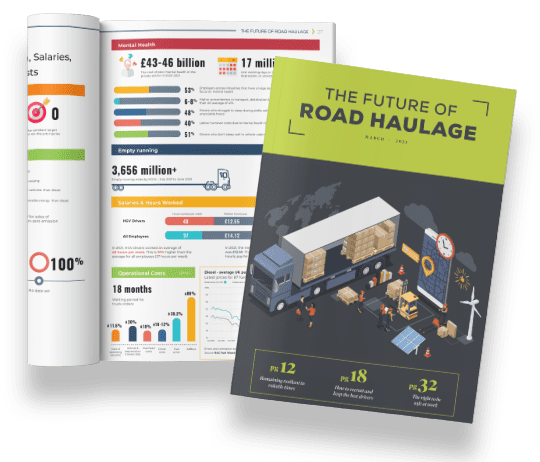A review of how the costs are stacking up for hauliers
Everyone working in commercial road transport knows how tough the trading climate is right now. Fuel, labour, and fuel additive costs have rocketed above inflation, and haulage firms everywhere are feeling the pinch as massive cost hikes affect bottom lines. The RHA’s annual Haulage Cost Movement Report shows an 11.6% increase in costs, excluding fuel (or 19% including fuel), based on a 44-tonne articulated vehicle and trailer.
All of this impacts the cost of living and the prices on our shelves (food inflation is at near-record levels), as 89% of goods are moved by lorry, including 98% of food, agricultural and consumer products. Here’s an overview:
Overhead costs: 10%
Once again, overhead increases were high, and transport operators were clearly concerned about the prospect of massive extra energy costs. Government’s Energy Bill Relief Scheme (EBRS) was designed to protect non-domestic consumers from soaring energy costs by providing discounts on wholesale gas and electricity prices. However, it only runs until the end of March 2023. From 1 April 2023, the Energy Bills Discount Scheme (EBDS) will replace the EBRS, but it provides a much lower level of support.
Aside from the increase in the cost of operating a 44-tonne heavy goods vehicle (HGV), other increases include administration, staff wages and National Insurance, cleaners, IT systems, telephone systems, etc.
Vehicle and depreciation: 20% (trailer 15%)
The heavy price increase trend for commercial vehicles and trailers from 2021 continued, and the time to fulfil a vehicle order continued to be long. Members reported as early as April that manufacturers had closed their order books for the year and that the waiting period was 18 months, while others reported 30% price increases on new truck orders.
Driver costs: 10.1%
Not all of the 10.1% increase was down to pay awards; National Insurance increases, training, and in some cases, agency costs, were also included. The National Living Wage increasing by 9.7% to £10.42 next year will add tremendous pressure to van and rigid HGV rates at the lower end of the pay scale. Members using agencies reported average increases between 10% and 12.5%, some more than 30%.
AdBlue diesel exhaust fluid (DEF): 86%
There has been tremendous difficulty sourcing AdBlue this year due to the war in Ukraine, which has added strain to other areas globally. Supplies are coming in from China but container movements are slow.
Fuel: 39.2%
Fuel prices increased beyond all reasonable expectation this year. This had a profound and instant effect from February 2022 as countries scrambled to withdraw or reduce their reliance on Russian oil and diesel. The UK usually imports between 18% and 25% of its diesel supply directly from Russia. Losing this in the space of a few weeks caused massive supply strain, and prices shot up globally. Our fuel survey showed peak price was mid-June, at 160.81ppl excluding VAT for bulk diesel. The average until the end of September in a 60/40 mix of bulk and card prices was 139.95ppl.
The 5ppl fuel duty cut announced in 2022 by then Chancellor Sunak for individuals and businesses only applies until the end of March 2023. In addition, the removal of the entitlement to use red diesel from 1 April 2022 came at the worst possible time for operators, especially those in refrigerated transport and waste management.
Richard says, “The spiralling costs made 2022 one of the toughest years for operators throughout the country, and more tough times are predicted for the year ahead. We must continue to push, relentlessly, for a better deal for the industry and the people who keep it going.”
Readers can find more information about escalating costs in the RHA’s Haulage Cost Movement report.
The Future of Road Haulage Report
This article is part of our recently published report, The Future of Road Haulage. Offering a comprehensive industry trends analysis, insights, and advice from industry thought leaders, The Future of Road Haulage equips businesses with the knowledge to make informed decisions and stay ahead in a rapidly evolving landscape.

